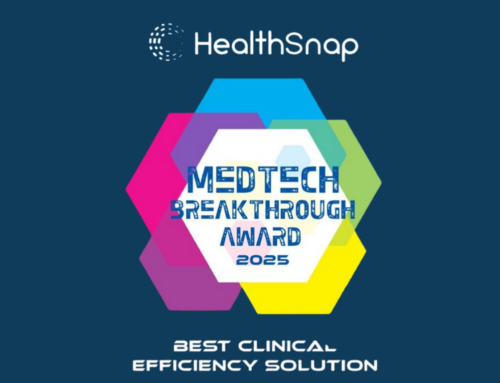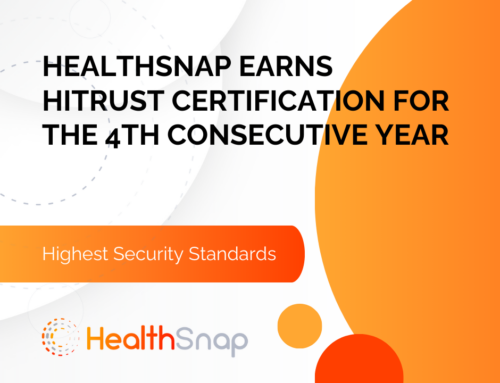Virtual care solutions have become indispensable in a digitized society where Triple Aim Healthcare seeks to provide accessible and affordable health care for all. The virtual care management model is being rapidly adopted for its win-win approach for both providers and patients.
With the use of connected digital tools to remotely monitor and record patient data in near real-time, providers can deliver more effective and timely interventions, improving patient outcomes and satisfaction rates. At the same time, healthcare providers get an opportunity to lower their care delivery costs, increase revenues, and add new revenue streams.
According to the Centers for Disease Control and Prevention, chronic diseases such as hypertension, heart disease, stroke, and diabetes are the number one cause of death and disability in the United States, accounting for as many as 7 out of 10 deaths each year. Leading healthcare organizations are now leveraging virtual care solutions to support patients suffering from these conditions, offering improved access to care, reduced healthcare costs, and better patient engagement.
Advantages of Virtual Care Solutions for Healthcare Providers and Patients
Virtual care solutions refer to healthcare services and treatments that are delivered remotely or virtually, using technology to facilitate communication between professionals and patients. This can include telehealth services, such as video consultations, digital consultations, Remote Patient Monitoring (RPM), and online platforms that provide health-related advice, education, and support.
These services allow patients to receive care in the comfort of their own homes, without having to travel to a clinic or healthcare facility. Embracing virtual care solutions for primary care and mental health is changing the face of quality care delivery in several ways:
It Provides Actionable Insights for Better Clinical Decision Making
Virtual care management solutions are changing the healthcare industry and benefit both providers and patients. These innovative solutions improve clinical decision making by providing near real-time patient data through Remote Patient Monitoring (RPM) tools. This data helps healthcare providers make better decisions, identify trends, and adjust care plans as needed. Here are a few examples:
- A healthcare provider can use RPM to track a patient’s blood pressure readings over time. If they notice a trend of increasing blood pressure, they can intervene early and adjust the patient’s medication or treatment plan to prevent a stroke.
- RPM can help healthcare providers identify if a patient is not taking their medications as prescribed. Remote monitoring of a patient’s medication adherence gives medical professionals the opportunity to intervene and provide additional support (such as daily reminders) as needed.
- Health systems can use the data collected from virtual care solutions to identify high-risk patients who may benefit from additional care management support in the form of medication reminder apps, blood glucose monitors, and regular check-ins with a nurse or care manager.
Ultimately, this can lead to better outcomes for patients and more efficient care for providers.
It Promotes Patient Adherence
Remote Patient Monitoring (RPM) allows patients to monitor their health status from home and communicate with their healthcare provider if necessary. As patients can regularly track their vital signs and symptoms, they gain a better understanding of their health status and can take proactive steps to manage their condition. This can include adhering to medication regimens, making lifestyle changes, and seeking on-demand medical attention.
Thanks to RPM, healthcare providers can get consistent access to patient data, identify potential issues, and intervene before a condition worsens or requires more intensive treatment, leading to better health outcomes. Virtual Care Management solutions like RPM often come with educational resources that can help patients better understand their condition and care plan which translates into increased patient engagement and adherence to treatment.
It Facilitates the Shift From Reactive to Preventive Health Care
Virtual care solutions help shift healthcare from a “sick care” model (treating patients only when they are ill) to a “well care” model that focuses on preventing illness and promoting wellness. This approach is more affordable and effective, benefiting patients, providers, and health systems. Virtual Care Management Platforms allow providers to deliver care and support to patients on a consistent basis, leading to better health outcomes and cost savings.
It Enhances Patient Access to Healthcare Services
Virtual Care Management is increasingly being recognized for its ability to increase access to care. In particular, for patients living in rural areas or facing transportation barriers, something like Remote Patient Monitoring (RPM) provides an effective means of engaging with healthcare providers and understanding their care plan. RPM can help improve health outcomes and reduce the risk of potentially avoidable hospital visits.
It Helps to Lower Healthcare Costs for Both Payers and Providers
Reduction in care expenses is another significant advantage of virtual care solutions, as they can help reduce healthcare costs by preventing potentially avoidable hospital or emergency room visits. By using the latest technology to monitor patients’ acute and chronic conditions in their homes, you can identify potential issues early on and intervene before they become serious enough to require hospitalization. This can help to significantly reduce the high costs associated with inpatient services.
It Opens Up New Revenue Opportunities for Healthcare Companies
Solutions like RPM offer a plethora of benefits for healthcare providers, including increased billable hours and the ability to reach new patient segments that they may not have been able to reach with traditional in-clinic care. With user-friendly, pre-configured RPM devices, and dynamic analytics, care providers can successfully address the needs of new patient segments and provide quality care at reduced costs.
Not to mention all the new revenue streams you can access with Remote Patient Monitoring (RPM) alone. For example, by using RPM to monitor a patient’s vital signs, you can bill for the time spent reviewing and interpreting the data, as well as for any adjustments made to the patient’s care plan based on that data.
You can also use RPM to offer Chronic Care Management (CCM) services and attract new patients who may be seeking more convenient and accessible care options. You can essentially tap into a growing market of patients who are interested in telehealth and other virtual care solutions.
Don’t Get Left Behind: Join the Digital Health Revolution With HealthSnap’s Integrated Virtual Care Management Platform
Gone are the days of depending solely on episodic care to treat patients. With HealthSnap’s virtual Care Management Platform capabilities, you can provide a continuous and proactive care solution to your patients, empowering them to take control of their health and prevent potentially serious health issues before they arise.
Imagine being able to monitor your patients’ health in near real-time, receiving data between office visits that can help you identify trends and make informed decisions about their unique needs. Our cellular-enabled, pre-configured, easy-to-use RPM devices allow you to do just that, improving data-driven clinical decision making and ultimately leading to better health outcomes for your patients.
If you wish to take your patient care as well as practice revenues to the next level, it’s time to embrace the future of healthcare with virtual care solutions like HealthSnap’s cutting-edge Remote Patient Monitoring (RPM) platform. Call us at 888-780-1872 or contact our team online to learn more.






